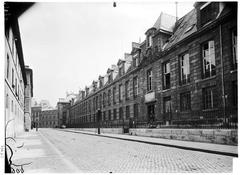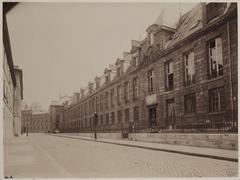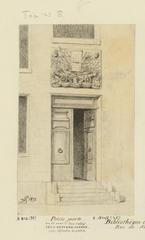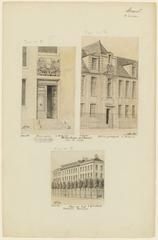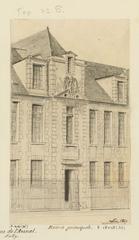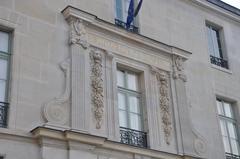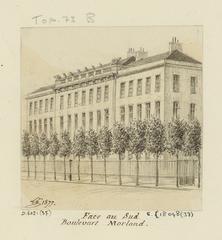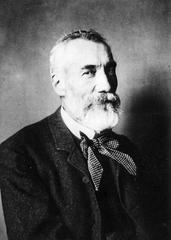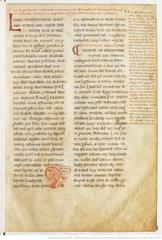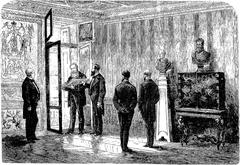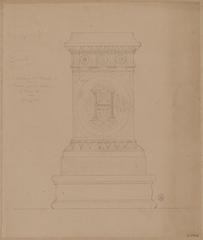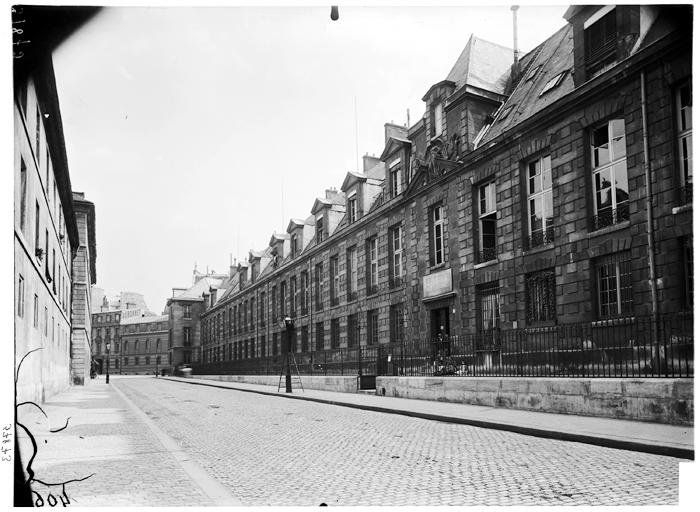
Bibliothèque de l’Arsenal Visiting Hours, Tickets, and Comprehensive Guide to Paris Historical Sites
Date: 14/06/2025
Introduction
Nestled in Paris’s historic Marais district, the Bibliothèque de l’Arsenal is a true emblem of French history, culture, and intellectual life. Once a military arsenal, it has evolved into a prestigious public library, housing more than one million volumes and offering a unique lens on France’s literary and architectural heritage. This guide delivers everything you need to know—visiting hours, ticketing, accessibility, guided tours, and an in-depth look at the library’s storied past and treasures. Whether you’re a scholar, bibliophile, or cultural explorer, the Arsenal promises an enriching Parisian experience (BnF Arsenal).
Table of Contents
- Introduction
- Location and Access
- Historical Background
- Architectural Highlights
- Collections and Special Treasures
- Visiting Hours, Tickets & Accessibility
- Guided Tours and Special Events
- Facilities and Visitor Tips
- Nearby Attractions
- Digital Resources
- Frequently Asked Questions (FAQ)
- Conclusion and Visitor Recommendations
- Sources and Further Reading
Location and Access
The Bibliothèque de l’Arsenal stands at 1 rue de Sully, 75004 Paris, a stone’s throw from the Seine and the Place de la Bastille. It is easily accessible via:
- Metro: Sully-Morland (Line 7), Bastille (Lines 1, 5, 8)
- Bus: Several lines serve the area
- Walking: Close to the Marais district and Île Saint-Louis
Its central location makes it a perfect stop during your exploration of Paris’s right bank (France-Voyage; EUTouring).
Historical Background
Origins and Evolution
- 16th Century: Built under King François I as a military arsenal and later expanded by the Duke of Sully.
- 18th Century: Architect Germain Boffrand modernized the Arsenal, reflecting Enlightenment ideals.
- Library Foundation: In 1757, the Marquis de Paulmy established a vast private library here, which became public after the Revolution.
- French Revolution: Nationalized and expanded by acquiring materials from Parisian abbeys and the Bastille.
- Modern Era: Incorporated into the Bibliothèque nationale de France (BnF) in 1934. The building is a protected Monument Historique (Wikipedia; Monumentum).
Architectural Highlights
- Styles: A harmonious blend of Renaissance, Baroque, and Classical elements.
- Façade: Symmetrical stonework and large windows exude Parisian elegance.
- Notable Interiors:
- Cabinet des Femmes Fortes: Features portraits of historical women, celebrating virtue and strength (WGA).
- Cabinet La Meilleraye: A 17th-century painted apartment.
- Salon de Musique: An 18th-century rococo masterpiece.
- Remnants of Charles V’s Wall: Medieval structures visible in the basement (actu-culture.com).
These interiors, along with period reading rooms and salons, transport visitors into the intellectual salons of Paris’s past (Offi).
Collections and Special Treasures
Manuscripts and Rare Books
- Manuscripts: Over 10,000, including the Psautier de Saint Louis et de Blanche de Castille (13th-century illuminated psalter) (sabf.fr; actu-culture.com).
- Rare Books: More than one million volumes, with strengths in French literature from the 16th–19th centuries, incunabula, and first editions.
Archives and Historical Documents
- Bastille Archives: Unique documents providing insight into pre-Revolutionary France (actu-culture.com).
- Prints & Maps: Over 100,000 prints and engravings, 3,000 maps and plans chronicling the evolution of Paris (sabf.fr).
Literary and Artistic Heritage
- Famous Residents: Salons of Madame de Genlis, Charles Nodier, José-Maria de Heredia, Pierre Louÿs, and Marie de Régnier.
- Music Collection: Rare scores and manuscripts from the 17th and 18th centuries.
- Decorative Arts: Historic furnishings and paintings evoke the ambiance of Parisian literary circles.
Thematic Collections
- French Literature: Journals, annotated works, and personal archives of major literary figures.
- Saint-Simonism: Extensive documentation on this social and philosophical movement.
- History of the Bastille: Administrative and personal records connected to the Bastille and its prisoners (sabf.fr).
Visiting Hours, Tickets & Accessibility
- Opening Hours: Tuesday–Saturday, 12:00 PM–7:00 PM. Closed Sundays and Mondays.
- Admission: Free for all visitors. Some exhibitions or tours may require a reservation or small fee (BnF).
- Accessibility: Wheelchair accessible with ramps and elevators; service animals welcome; staff assistance available.
- Photography: Permitted in designated areas only. Flash and tripods are generally prohibited.
Guided Tours and Special Events
- Guided Tours: Offered every Wednesday at 3:00 PM (advance reservation required). Tours explore historic interiors and collections (actu-culture.com).
- Exhibitions & Lectures: Rotating exhibitions and cultural events highlight the library’s treasures. Check the official website for current programming.
Facilities and Visitor Tips
- Amenities: Cloakrooms, restrooms, and Wi-Fi in designated areas.
- Visitor Guidelines:
- Allocate 1.5–2 hours to explore.
- Wear comfortable shoes (historic stairs and wood floors).
- Maintain silence in reading areas.
- No food/drinks in library spaces.
- Always check photography policies with staff.
- Accessibility Note: Some historic rooms may have limited access due to preservation.
Nearby Attractions
Enhance your visit by exploring:
- Place des Vosges: Paris’s oldest square with arcades and gardens.
- Musée Carnavalet: Museum of Parisian history.
- Île Saint-Louis: Picturesque island with classic Parisian charm.
- Cafés & Bakeries: The Marais teems with eateries perfect for a post-library treat.
Digital Resources
- Online Collections: Access digitized manuscripts and rare books via the BnF digital portal.
- Virtual Tours: Explore interiors and collections online.
- Research Tools: Digital catalogs and archival databases for scholars worldwide (archive.org).
Frequently Asked Questions (FAQ)
What are the visiting hours?
Tuesday to Saturday, 12:00 PM–7:00 PM. Closed Sundays and Mondays.
Is admission free?
Yes, general admission is free. Some exhibitions/tours may require tickets.
Are guided tours available?
Yes, every Wednesday at 3:00 PM (reservation required).
Is the library accessible for disabled visitors?
Yes, with ramps, elevators, and staff assistance.
Can I take photos inside?
Photography is allowed in some areas; always check with staff.
How do I get there?
Metro: Sully-Morland (Line 7), Bastille (Lines 1, 5, 8). Several bus routes serve the area.
Visual Gallery
- Exterior Façade: “Bibliothèque de l’Arsenal exterior Paris historical sites”
- Main Reading Room: “Bibliothèque de l’Arsenal main reading room with historic architecture”
- Cabinet des Femmes Fortes: “Cabinet des Femmes Fortes interior with historic portraits”
- Historic Manuscripts: “Rare manuscripts at Bibliothèque de l’Arsenal”
- Remains of Charles V’s Wall: “Medieval wall remains in Arsenal basement”
Conclusion and Visitor Recommendations
The Bibliothèque de l’Arsenal is far more than a repository of books—it’s a vibrant cultural institution reflecting centuries of French history, art, and scholarship. From the rococo salons and rare manuscripts to its pivotal role during the French Revolution, the Arsenal offers a compelling journey into France’s past and intellectual life.
Visitors can expect accessibility, free entry, and a rich program of tours and exhibitions. Its central Marais location makes it an excellent starting point for exploring Paris’s historic heart. To maximize your visit:
- Check official visiting hours and events
- Book guided tours in advance
- Use the Audiala app for curated audio guides and content
- Combine your visit with nearby Parisian landmarks
Whether you are a first-time visitor or a seasoned researcher, the Bibliothèque de l’Arsenal promises an unforgettable Parisian experience.
